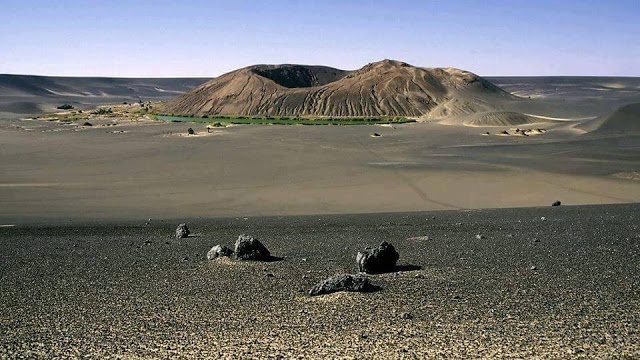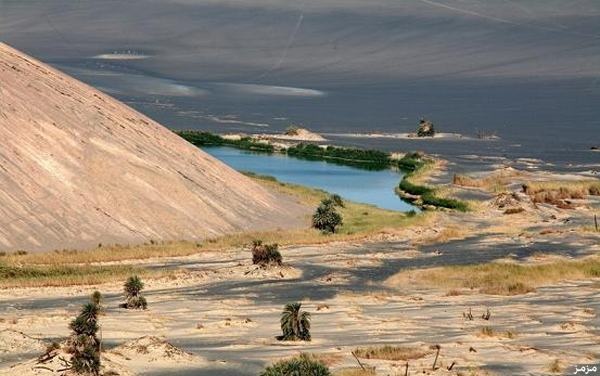The Libyan Desert is a whole other world, whether you're looking for adventure or want to escape the day-to-day life; it’s a place with endless wonders, weirdness, and secrets.
Waw an Namus is another fantastic site from the desert region, one of the weirdest geographic landscapes on our planet, most famous for being the spot that had the best visual experience of total solar eclipse of all time, where thousands of tourists travelled there to observe the total solar eclipse that occurred in 2006 under the transparent desert sky.
The place boasts a volcanic mountain that rears to (575m); its surface extends from 10 to 20 km which consists of dark volcanic tinplate and black basaltic rocks, if you are eager to visit the moon, this will be a great choice, seeing that the nature of the land makes it the closest thing we have to the moon on Earth, this could be seen clearly from an aerial shot, as Google Earth program shows, therefore it is called "A piece of the moon".
Scientists are uncertain of the last volcanic eruption happened here, it may have been centuries ago, it is also thought that the Knowledge of iron use in Africa dates back to the ancient Nok civilization that used iron powder located in the southwestern part of the site.
The mountain is surrounded by palm and bamboo trees with colorful lakes scattered on its foot fitting in perfectly with the golden sand and creating an incredible natural scene, while the nature of the region makes it a natural reserve for dozens of birds and animals. It was first visited by a French expedition commissioned by the French traveler Laurent Roubeli in 1918, followed gradually by other expeditions.
"Waw an Namus" was also the title of the book of the Italian geologist Angelo Bessi, who wrote about the extended area from south-central Libya to the northern region of Chad. The book was published by the Petroleum Exploration Society in Libya in 1966.



